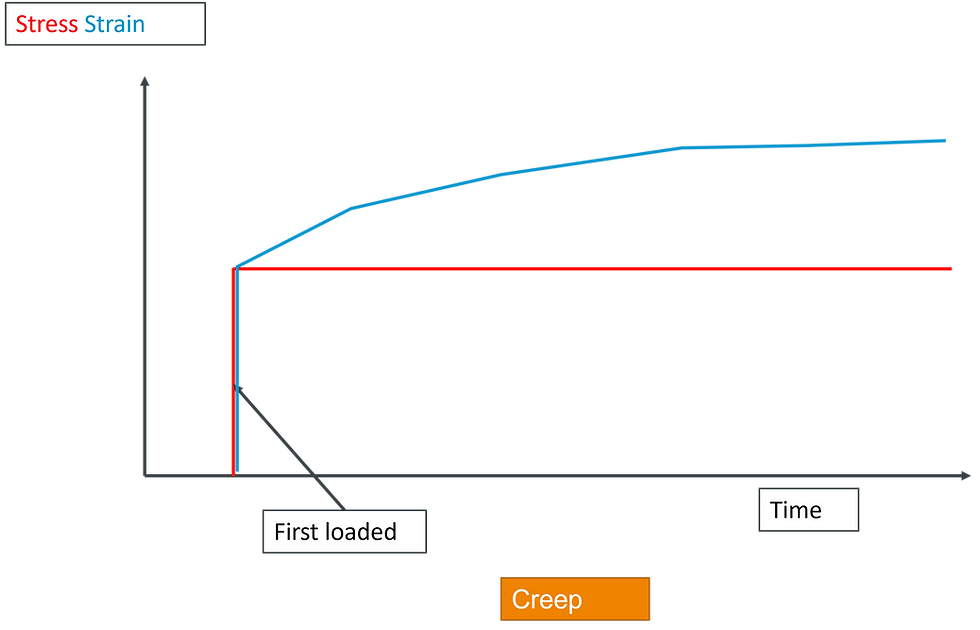Plain concrete - how is it different
- Si Shen

- Nov 11, 2021
- 2 min read
Why is there such a thing as ‘minimum reinforcement’?
Structural concrete needs to be reinforced properly to perform safely, minimising the risk of sudden and brittle failure. For safety-critical structural members, regardless of its loading condition, there is a lower limit of reinforcement quantity, based on section size and concrete grade, and is called ‘minimum reinforcement’. This is to ensure the structure has adequate reliability and safety in use, as a structural engineer can never 100% accurately predict a structure’s loading condition. Engineers by default applies the minimum reinforcement threshold to the design, which is the right and safe thing to do. However, concrete still works even without reinforcement, although much less well. The minimum reinforcement rule does not necessarily apply to everything.
In some less safety-critical occasions, the engineer may make the judgement call to deliberately under-provide reinforcement, or even none at all, to achieve better economy. In this case, the concrete can be classified as ‘plain’ (or ‘lightly reinforced’) concrete, with a different set of design rules compared to adequately reinforced concrete.
How is plain concrete different from reinforced concrete from a design perspective?
Plain concrete, due to the lack of (enough) reinforcement, suffer from lower ductility, which is a critical criterion for structural safety. Lower ductility means higher risk, which means more redundancy has to be built in to achieve a satisfactory level of safety. This leads to a higher reduction factor for the materials. This leads to the following differences in the design:
Design approaches based on plasticity, including the use of stress/moment redistribution, and non-linear analysis, are generally discouraged, unless the ductility or deformation capacity can be rigorously justified/demonstrated.
Due to the lack of ductility, to ensure the same level of safety, both the design compressive strength and the tensile strength of plain concrete is reduced by about 30% and 40% respectively (specific to the UK code), so is the section capacity.
Shear failure is a nasty failure mode as it is brittle with less signs of early warnings. This is particularly the case for plain concrete – apparently good concrete can turn into a pile of rubbles within a split second. A completely new equation has to be used for shear in plain concrete.


When could plain concrete be considered?
Non-structural concrete
Concrete that stays in compression permanently. Such as mass-concrete foundations, gravity retaining walls, dams
Fibre-reinforced concrete. Who said concrete had to be bar-reinforced? Fibre is a good alternative to bar reinforcement and can provide an acceptable level of ductility and post-crack strength




This is a great article that clearly explains the key differences between plain and reinforced concrete. The explanation of how plain concrete has a higher risk of sudden failure due to a lack of ductility was particularly helpful.
In the construction industry, precast concrete elements are becoming increasingly common. Are there any considerations for using plain concrete in precast applications, or is reinforced concrete always the preferred choice? https://www.phoenixstuccocontractor.com/installation/
Great post, however in the last paragraph you don't mention tunnel linings made of unreinforced concrete with reinforcement only provided in the invert/lower part of the wall connected to the invert. Could you please share your experience with plain concrete tunnel linings and explain how plain concrete concept is applied to tunnel linings and what design methodologies/codes/guides are applicable? What are the crack limits for plain concrete and how this is addressed by the design methodologies/codes? Is it the same as for reinforced concrete? With no reinforcement and cracking, plastic hinges can easily form, which redistribute the localised (high) bending moments and in turn this might allow a more economic design, but I can imagine additional criteria need to be…